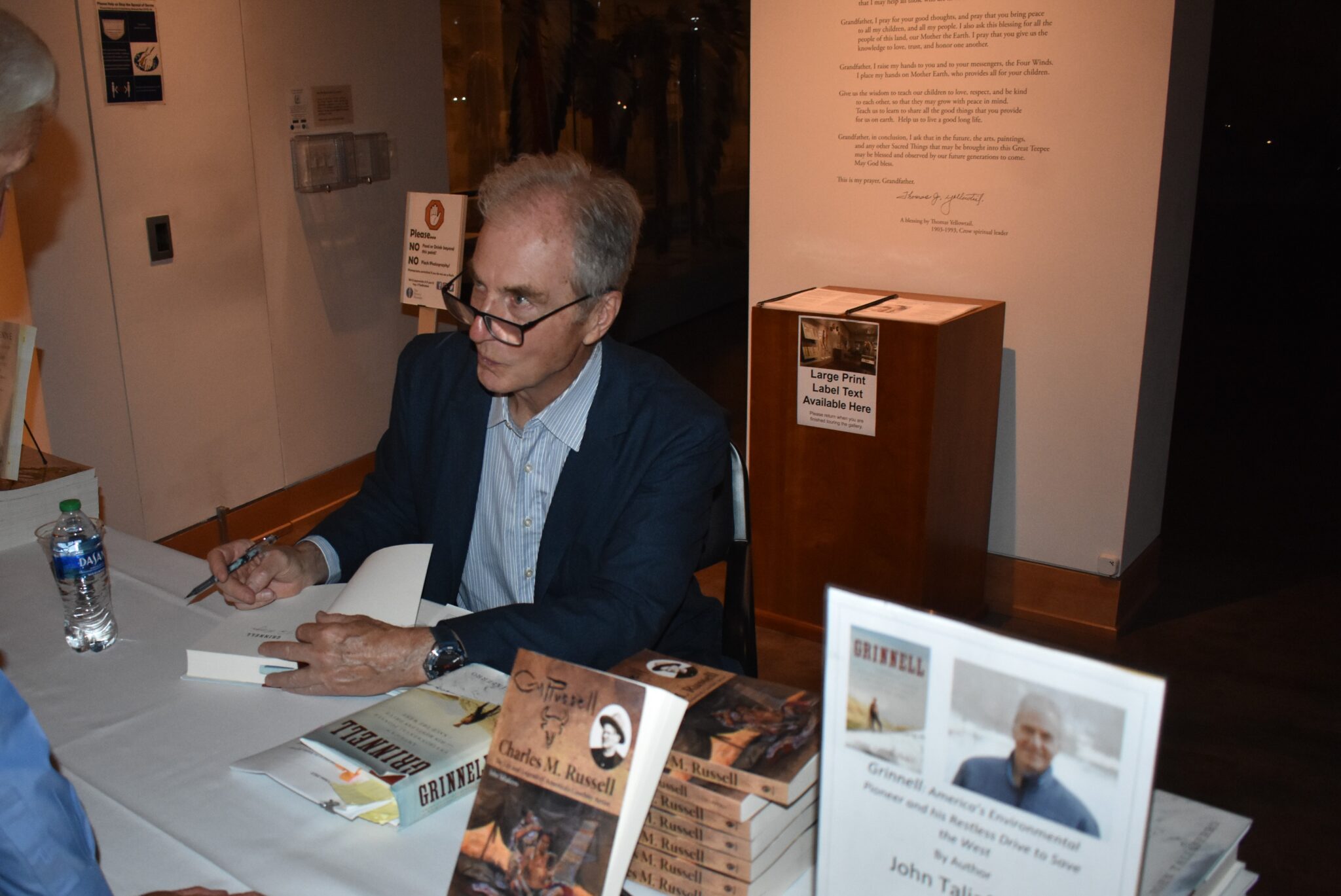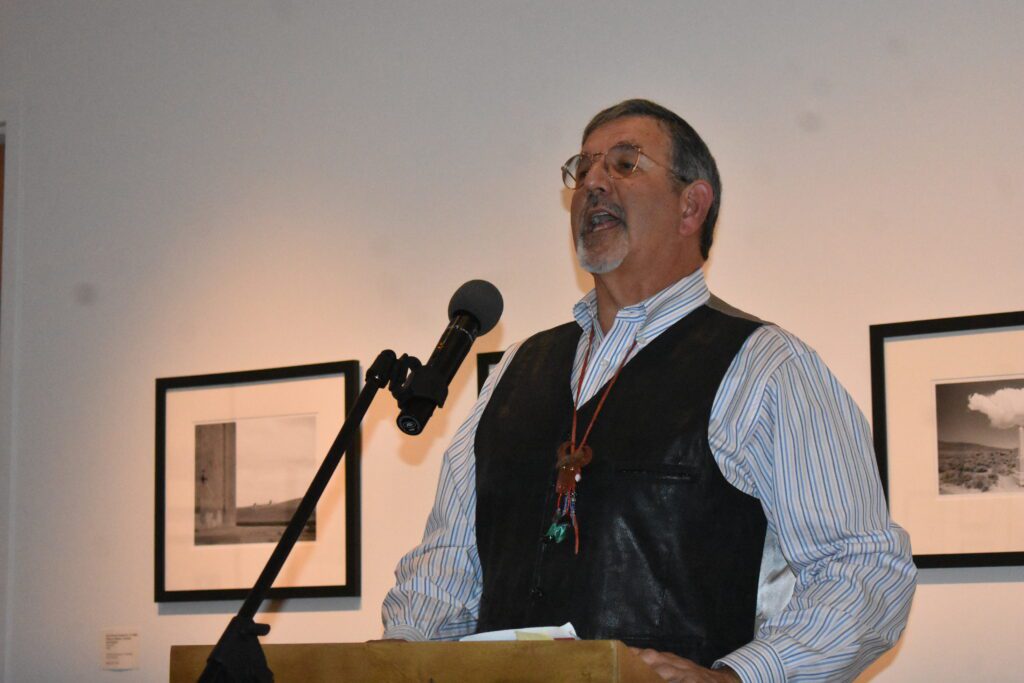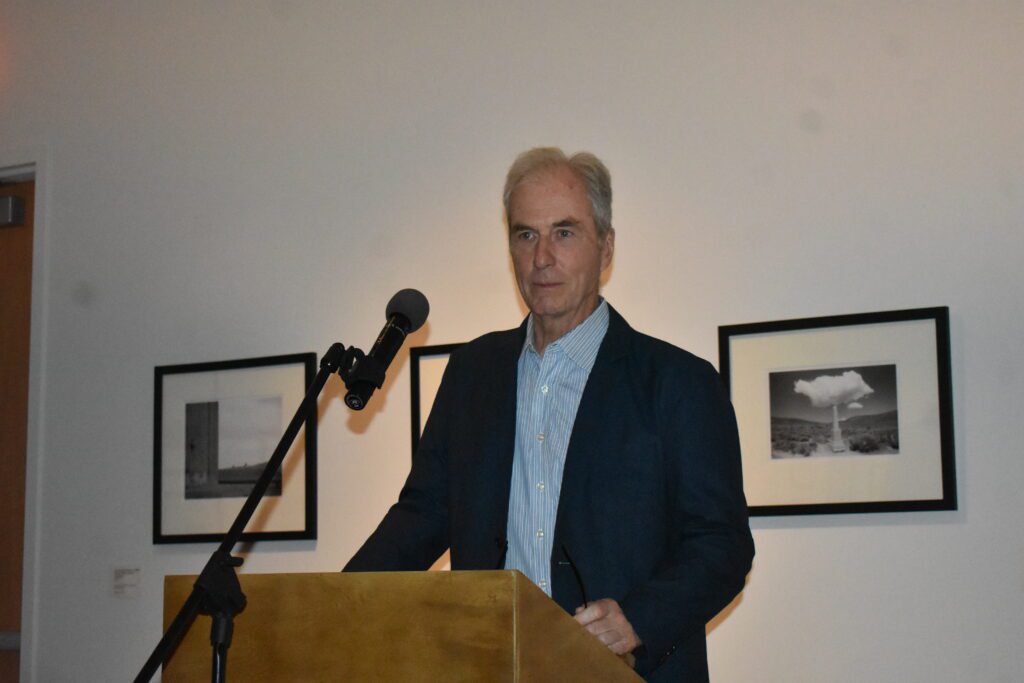News
Talk on George Bird Grinnell at Brinton Museum


Published
2 years agoon
By
cvannoy
On June 9, the Brinton Museum hosted a reception and a lecture on the early environmentalist George Bird Grinnell. The lecture was given by nationally known journalist John Taliaferro, author of “Grinnell, America’s Environmental Pioneer and His Restless Drive to Save the West”.

Kenneth L. Schuster, Brinton Curatorial Director introduced Taliaferro and introduced the Brinton staff. He talked about Taliaferro’s writings, including a book on Charles Russell and one about John Gutzon Borglum, who was the artist behind Mount Rushmore.
Taliaferro said that in writing the book he wanted to re-introduce George Bird Grinnell
He said his original intent in writing the book was to tell the story about a man who was trying to get the last squeeze out of the American frontier, he went west to see if there was anything left of the wild west.
As he got further into his letters, “40,000 pages of his letters” Tailaferro said, he realized there was a much bigger and more important story here. He said the new aim in writing the book was to remake Grinnell’s name a household word among those who take an interest in the country’s natural wonders and resources.
He said that now days we recognize conservation as a scientific discipline. The science of measuring, modeling and projecting the impact of humankind on the natural environment serves as a foundation for the building blocks of public policy.

But, he added, in the late 19th and early 20th century, science was not the driving force behind conservation, it was more personal conviction, and in many cases personal conviction sorely that determined conservation policy and the laws that codified that policy.
He added that Grinnell was an early virtue signaler.
At the age of seven (about 1856), Grinnell and his family moved to Audobon Park, where he saw the great flocks of passenger pigeons that often landed in the dogwood trees near his home. By the time he graduated from Yale in 1870, the massive migration of passenger pigeons was a thing of the past.
In 1920, Grinnell said the national parks, such as Yellowstone, were producers of wealth.
Grinnell was also a friend of Professor Othniel Charles Marsh a professor at the Peabody Museum of Natural History at Yale. He saw the dinosaur bones near Como Bluffs, Wyoming which was one of the
Grinnell talked to many Native Americans, including the Pawnee, the Blackfeet and Cheyenne, and wrote about them in his journals.
He was enamored by the Cheyenne Tribe and wrote several books about them; The Fighting Cheyennes (1915), and a two-volume work, The Cheyenne Indians: Their History and Lifeways (1923). He also books about the Pawnee and the Blackfeet people.
A full house attended the lecture, and afterward Taliaferro signed his books for the purchasers. The Grinnell book is available at the Brinton Museum and Fort Phil Kearny gift shops.
